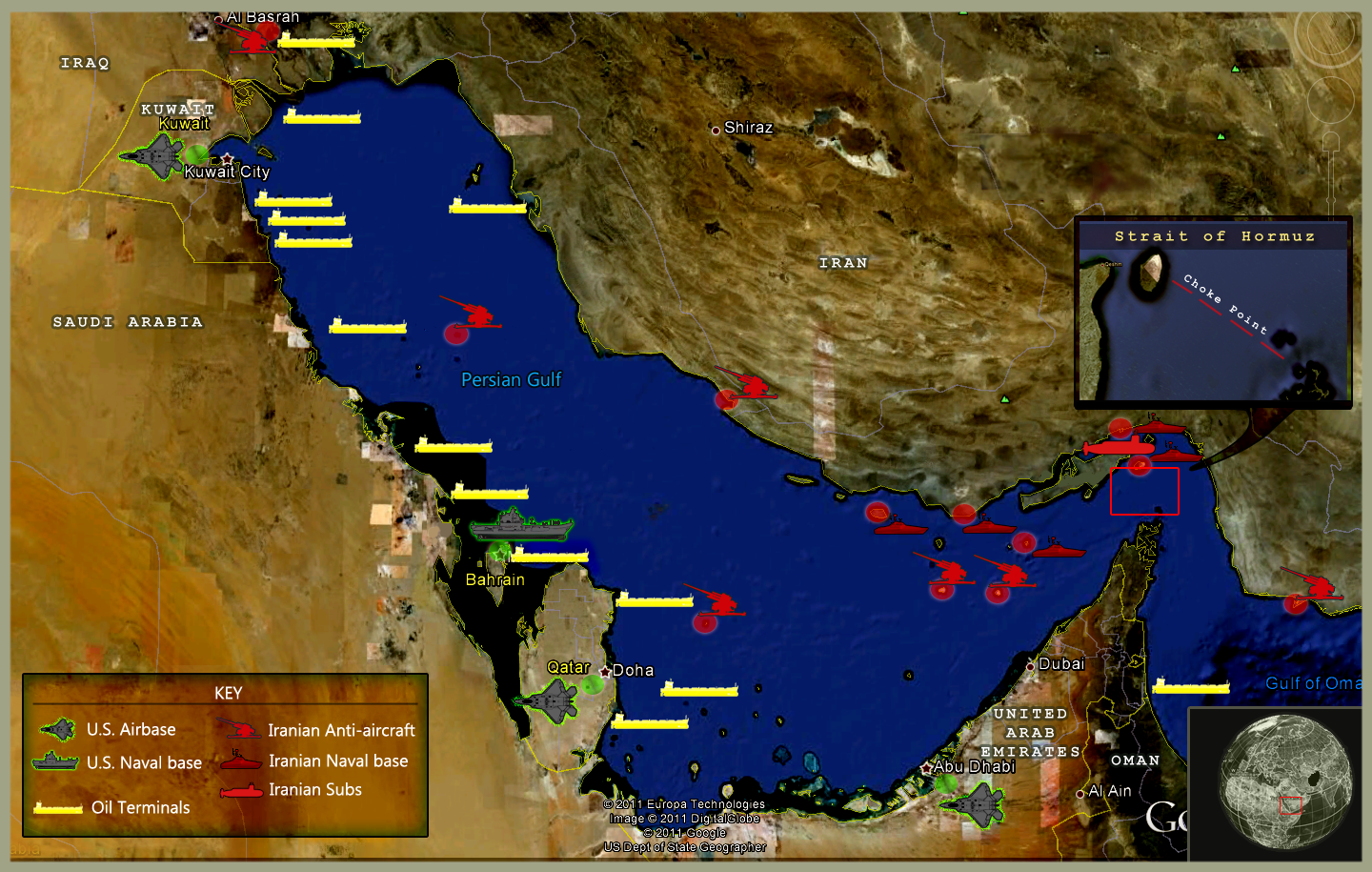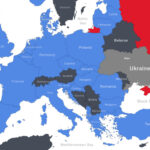Originally posted January 6, 2012.
UPDATE 5/4/2016: Revolutionary Guard Commander Threatens to Close the Strait of Hormuz
Amir Vahdat writes:
The deputy commander of Iran’s powerful Revolutionary Guard said Iranian forces will close the strategic Strait of Hormuz to the United States and its allies if they “threaten” the Islamic Republic, Iranian state media reported on Wednesday.
The comments by Gen. Hossein Salami, carried on state television, follow a long history of both rhetoric and confrontation between Iran and the U.S. over the narrow strait, through which nearly a third of all oil traded by sea passes.
Read more here.
The war drums are beating over Iran’s recent threat to close the Strait of Hormuz. There has been plenty of speculation in the media about whether or not Iran could even do it. The answer, according to Sabahat Khan, an analyst at the Institute for Near East & Gulf Military Analysis (INEGMA), is that Iran is more than capable of closing the strait, but that it might not be able to do so for a long period of time.
Khan wrote in 2010 that Iran could block the strait with a minimum of 300 mines, and that the Islamic Republic owns between 2,000 to 5,000 mines according to various estimates. Marine mines are an inexpensive way for Iran to gain control of the strait. Khan writes that a $1,500 Iranian mine caused the USS Samuel B. Roberts $96 million worth of damage at the end of the Tanker War. That’s a great return on cheap technology for Iran.
Iran would need a minimum three hour uninterrupted block of time to mine the strait. Khan believes Iran would lay the mines using submarines. Stopping these subs from deploying mines would be a critical part of any attempt to keep the strait clear. Khan writes that clearing mines can take up to 200 times as long as laying them. But he goes on to say that critical shipping lanes could be opened in weeks.
Free passage through the strait is vital for the world economy, which is dependent on the 17 million barrels of oil that exit it every day. That’s around 35% of the world’s seaborne oil trade. Khan writes that 90% of the Arab Gulf States’ oil exports cross the strait. Iraq and Saudi Arabia could ease the pain caused by a Persian Gulf blockage by utilizing idled pipeline capacity running to the Mediterranean Sea and Turkey. For the smaller Gulf States, the pain would be more severe. The UAE is the world’s third largest oil exporter, with Kuwait fifth and Qatar fifteenth. Neither these countries, nor the world, can afford a stoppage of oil exports from the Persian Gulf.
So what is the solution Iranian aggression in the Strait of Hormuz? Lieutenant Commander Colin Karl Boynton wrote about the possible scenario for the Naval War College in 2009. LCDR Boynton said that the Strait of Hormuz is ideal for the type of sea denial operations Iran is contemplating, and that the U.S. Navy would be best served by not allowing its blue water ships to be caught in the shallows and narrows of the Strait area. Recently the USS John C. Stennis steamed out of the Persian Gulf to deeper waters. Coincidence? Doubtful.
Iran would love nothing more than to draw the U.S. fleet into the Strait of Hormuz in order to whack away at American power with anti-ship missiles from land, and its fleet of thousands of fast-boats deployed at island bases throughout the Persian Gulf. As you can see on the accompanying map, Iran has amassed its military assets around the Strait of Hormuz chokepoint. LCDR Boynton writes that the American forces should remember the military maxim, “never fight how your opponent wants you to fight.”
The biggest question regarding an Iranian closure of the strait is, why do it at all. According to Khan, 87% of Iran’s imports and 99% of its exports are seaborne. LCDR Boynton points out that 40% of Iran’s daily gasoline needs are imported through the strait. If the strait were closed, Iran’s economy would likely come to a grinding halt. And with it, the country’s ability to wage the war resulting from its actions. The better bet on Iran’s motivation is that Iranian leadership is bluffing up the price of oil to counter international sanctions that have done serious damage to the regime. The resulting profits from high oil prices are more likely to be used for the continued suppression of Iran’s population than on fighting a war with the U.S. and the Gulf States.





